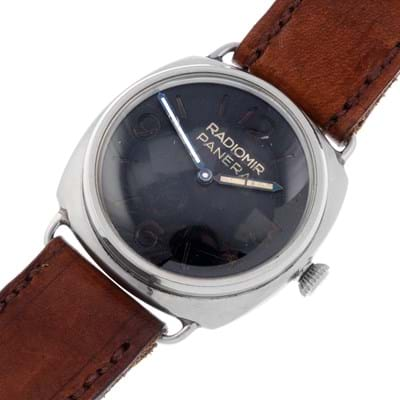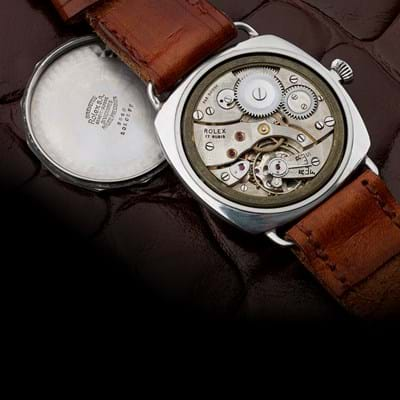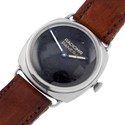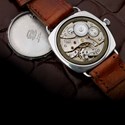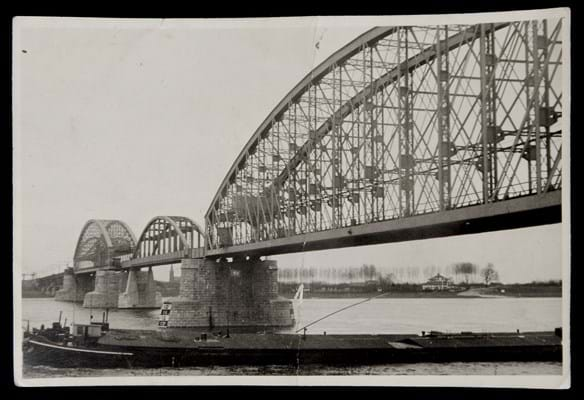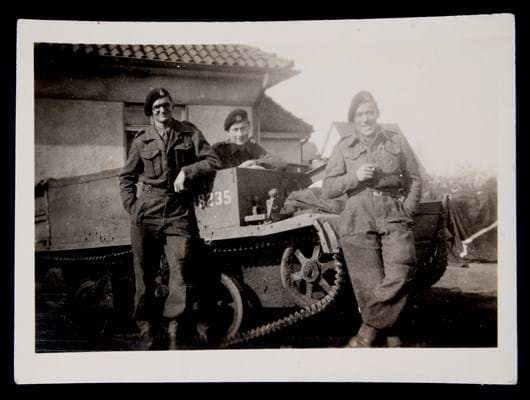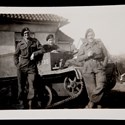This Panerai military diver's watch is estimated at £30,000-40,000 in the Birmingham auction house’s January 30 Watch Sale.
The vendor is the son of a British soldier who fought during the war. The soldier, George H Rowson, acquired the watch from a Kampfschwimmer (German frogman), during a thwarted attempted by the German forces to destroy the important Nijmegen Bridge in the Netherlands, in September 1944.
The Battle of Nijmegen in September 1944 was part of Operation Market Garden, the flawed attempt to capture bridges over major canals and rivers using Allied airborne troops as a spearhead.
The watch has a hand-carved inscription on the reverse detailing the British soldier’s name, rank and the year the piece was acquired.
It has remained in single ownership since it was passed down to Rowson’s son and has been worn only a few times. The watch comes with a hand-written account of the event by Rowson, and even a section of the rubber diving suit acquired from the German soldier.
Rare Italian miltary success
This model of Panerai watch was initially intended for the Italian Decima MAS (Decima Mezzi d'Assalto, or 10th Assault Vehicle Flotilla) but was also used by the Germans. They were made c.1941-43.
While Italian military efforts in the Second World War were largely unimpressive, to say the least, the elite naval special forces can be counted a rare success. Along with the frogmen and surface speedboats packed with explosives (such as those which sunk HMS York), attacks included manned torpedoes (the Maiale – Pig - type).
In December 1941 the Royal Navy was shocked by a raid on Alexandria harbour involving two-man teams on torpedoes which put the British battleships Queen Elizabeth and Valiant out of action.
Popular at auction
Military issue watches are popular buys at auction and have cross-over appeal to both militaria and watch collectors. In September 2016 Great Western Auctions of Glasgow sold a Panerai Type D Model 3646 military wristwatch with Rolex 17 Rubis movement for £44,000 against an estimate of £5000-8000.
In May that year another Panerai of that model made £55,000 (estimate £20,000-30,000) at Cheshire auction house Wright Marshall. The outer case was engraved Kampf-Schwimmer, for the German commando force frogmen. It was also marked L.K.700 - LehrKommando 700, which was the headquarters of the German frogmen units located on the island of Sylt, which was occupied by British forces at the end of the Second World War.
Just two months earlier, Wright Marshall also sold a ‘Rolex 17 Rubis Panerai 3646 wristwatch’ for £46,000 against an estimate of £5000-7000.
Panerai origins
According to the paneria.com website, the Panerai story began in 1860 when Giovanni Panerai opened his watchmaker’s shop on Ponte alle Grazie in Florence, serving not only as a shop and workshop but also the city's first watchmaking school.
The website adds: “To meet the military needs of the Royal Italian Navy, which it had already been supplying with high precision instruments for a number of years, in 1916 Officine Panerai created Radiomir, a radium-based powder that gives luminosity to the dials of sighting instruments and devices.”
On the eve of the Second World War, Panerai “created the first prototypes of the model now known as ‘Radiomir’ for the frogman commandos of the First Submarine Group Command of the Royal Italian Navy. The navy’s historical archives record that just 10 prototypes were produced in 1936.”
Panerai watches are still made and recent models have been inspired by the navy examples.


